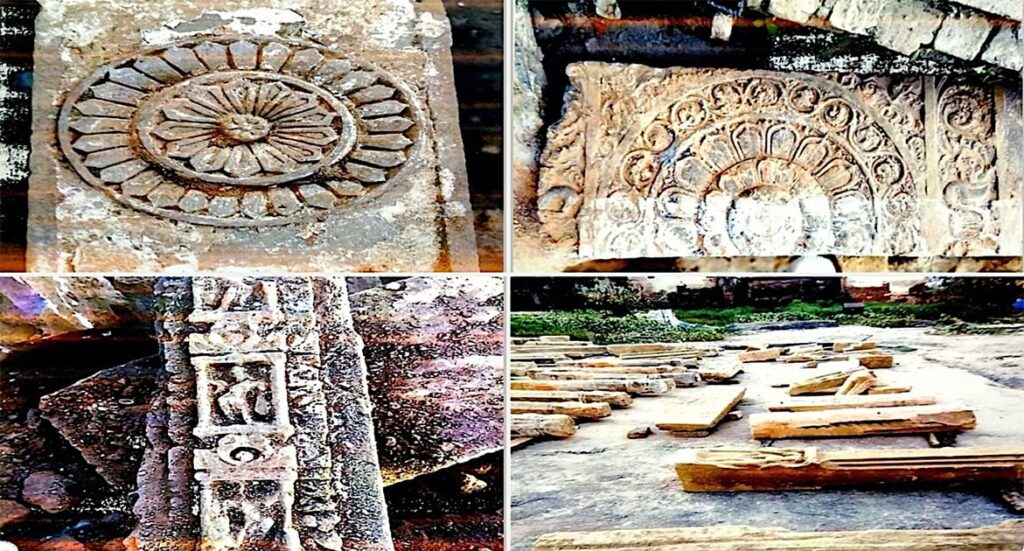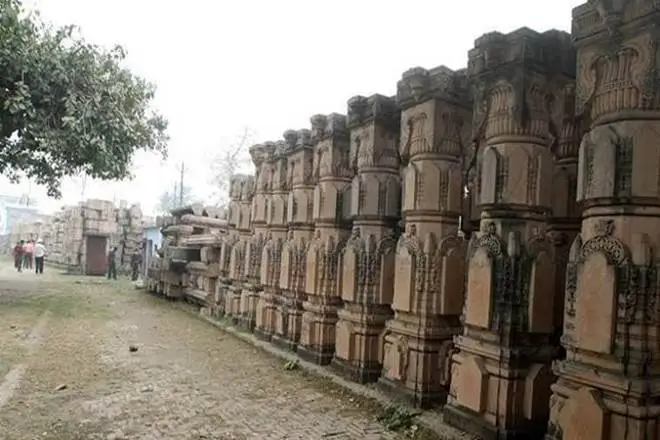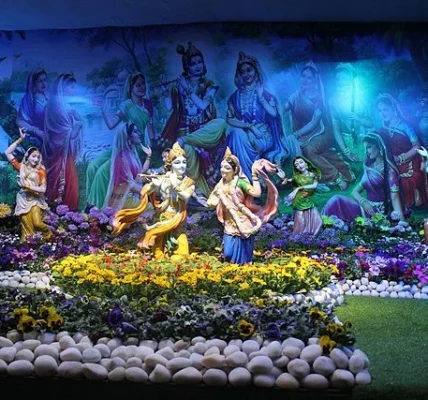Ayodhya, a city located along the Sarayu River in Uttar Pradesh, India, is of great importance to Indian history, culture, and religiousness. Its intricate fabric interconnects time-honored customs, spiritual accounts, and present-day advancements, establishing it as a nexus for past history investigation and modern discussions alike.
Ancient History of Ayodhya

The historical history of Ayodhya spans hundreds of years, showing how it developed from a humble community to a hallowed sacred fortification. Indications of human activity dates back to the 6th and 3rd centuries BC. Northern Black Competent Ware, iron tools, beads, hearths, and drainage systems have all been found during excavations.
The settlement changed by the Gupta era (4th–6th AD), when terracotta sculptures, architectural breaks down, and a clear transition from residential to holy areas revealed enormous constructions that were probably palace or religious.
The importance of Ayodhya was reaffirmed throughout the Kushan period (100–300 AD). Accompanying stoves and enormous concrete platforms as well there was elaborately adorned ceramics with Buddhist triratna and flower themes, suggesting advanced craftsmanship and possibly religious gathering.
Coins with imperial motifs and ongoing brick structures discovered in Gupta period levels indicate ongoing construction activity, albeit not on an epic scale.
According to pillar bases, shrine relics, terracotta idols, and inscriptions, the location had minimum three temple superstructures by the ninth and twelfth centuries.
From prehistoric settlement to Gupta and Kushan religious structures to medieval temples, this multi-layered archeological story illustrates Ayodhya’s continued spiritual and historical significance even before contemporary disputes surfaced.
Ayodhya Before Ram Mandir Construction
Before to the building of the Ram Mandir, Ayodhya located numerous history-based and religious-related points of interest. The Babri Masjid, constructed in the 16th century-end by Mughal leader Mir Baqi, was located at a debated site that numerous people consider to be the origin area of Lord Rama. The destruction of the Islamic center by Hindu activists in 1992 resulted in extensive neighborhood disturbances and a lengthy constitutional dispute concerning the site.
The Babri Masjid and Ram Janmabhoomi site controversies turned into central to political and spiritual discussions in India. The disagreement resulted in considerable alterations to the city’s landscape—physically and socially—as it transformed into a symbolism of the complicated divine interactions in the country.
Ayodhya Ram Mandir History
Ayodhya’s sacred and constitutional heritage has revolved surrounding the Ram Mandir. In the end of 20th decade, the call for a religious structure at the Ram Janmabhoomi site intensified, leading to the Babri Masjid’s downfall in 1992. This incident initiated over the country discussions and court cases.
The Supreme Court of India issued a historic ruling in 2019 that awarded the disputed place land to Hindus for building a Ram temple building and designated a substitute location for a mosque. This approval opened the door for building the Ram Mandir, alongside the building block groundwork having been laid in August 2020.
For many Hindus, the building of the temple represents the realization of a long-held aspiration, and it has turned Ayodhya into an important religious site. The opening of the Ram Mandir in January 2024 marked a new era in the city’s history, attracting countless of faithful and visiting people.
Ayodhya City History
Ayodhya’s history encompasses not only gods-based storytelling but also its development as a city centre. Ayodhya has experienced substantial changes, evolving from its origins as the capital of the Ikshvaku reign to becoming a prominent spiritual and historical hub.
In the previous few years, there have been attempts to transform Ayodhya into a contemporary city, all the while preserving maintaining its historical and religious heritages. infrastructural initiatives, such as building a world-famous airport and developing routes and facilities, are designed to handle the increasing number of visiting people and enhance residents’ quality of life.
Historical Places in Ayodhya
The city of Ayodhya contains numerous architectural and religious-related sites that draw both guests and visitors. Among the important locations are:
- Hanuman Garhi Temple: This monument, which dates back to the 10th decade, is enclosed to Lord Hanumanji and is considered to be the defendant worshipper of Ayodhya. The sacred building, located on a small hill, provides with panorama-like sightings of the settlement.
- Kanak Bhawan: A temple-site thought to have occurred bestowed upon Lord Rama and Sita by Queen Kaikeyi’s following their wedding. Famous for its stunning building construction and peaceful atmosphere, the sacred building is well-known.
- Ram Ki Paidi: A chain of ghats along the Sarayu River, important for spiritual practices and procedures. At occasional celebrations such as Diwali and Kartik Purnima, the paths bustle with activity.
- Nageshwarnath Temple: This temple, which is devoted to Lord Shiva, is thought to have exist founded by Kush, the son of Lord Rama. It is among of the remarkable sacred places located in Ayodhya City.
Along with other sites, these contributes to Ayodhya’s significance as a prominent pilgrimage destination and showcase its abundant past and cultural traditions.
Timeline of Ayodhya History: A Chronological Glance
The following is a brief history of Ayodhya:
- Treta Yuga: the formation and rule of Lord Rama.
- Saket, as he is known in Buddhist writings, lived in the middle of the sixth century BCE.
- In 1528 CE, Mir Baqi, the Mughal commander, established the Babri Mosque.
- The first known communal conflict at the contested spot occurred in 1853.
- Rama idols first appear within the Babri Mosque in 1949.
- 1992: During the Kar Seva movement, the Babri Mosque was destroyed.
- 2019: Temple construction is permitted by a Supreme Court ruling.
- 2020: Temple construction starts after Bhoomi Pujan.
- 2024–2025: Ayodhya Ram Mandir is finished and opened.
This Ayodhya history timeline provides a detailed picture of the city’s development from its religious beginnings to its contemporary revival.
Ayodhya Temple History UP: Pillars of Devotion

Located in Uttar Pradesh on the revered banks of the Sarayu River, the Ayodhya Ram Mandir is a symbol of centuries of religious devotion. Although they have been disputed throughout time, ASI archaeological investigations in 1976–1977 and 2003 revealed terracotta remains and ruins of Hindu temple pillars beneath the Babri Masjid, including a Purna Kalasha from the 12th century.
Architect Chandrakant Sompura created the current temple, which was dedicated on January 22, 2024, in the historic Nagara style. Its superstructure, which spans three 20-foot floors and rises to 161 feet, has 44 entrances and an astounding 392 finely engraved pink limestone pillars.In homage to ancient temple methods, copper plates were used to attach the stones rather than iron or steel. These pillars were carved by talented craftspeople in establishments in Ayodhya and Pindwara after being sourced from Bansi Paharpur, Rajasthan.
Beyond its construction function, each pillar is a work of devotion, symbolizing the “Pillars of Devotion” with its representations of the Ramayana, gods, flowers, and cosmic symbols. They link the temple to centuries of architectural skill, cultural renaissance, and spiritual resonance. As evidenced by pillars and pranalī found during early excavations, the Mandir now serves as a symbol of unwavering dedication, resiliency, and spiritual rejuvenation in addition to being a place of worship.
Ayodhya Ram Mandir History: Revival of a Civilization
On August 5, 2020, Prime Minister Narendra Modi led the historic Bhoomi Pujan (groundbreaking ceremony), symbolizing the beginning of the current Ayodhya Ram Mandir’s history. Millions of people’s desires were realized as the sacred structure was built, heralding in an entirely novel phase in Ayodhya past.
The temple is a wonder of architecture, constructed in the classic Nagara style. The edifice, which was built using Rajasthani pink sandstone and is based on centuries-old civilizations design ideas, represents dharma, power, and the presence of God.
The Ayodhya Ram Mandir, which has several sanctums, carved pillars, and an expansive campus, is anticipated to draw hundreds of millions of pilgrims each year, transforming the city into a major spiritual hub. Thus, the history of the Ayodhya Ram Mandir becomes a national rebirth of faith and tradition rather than only a provincial occurrence.





